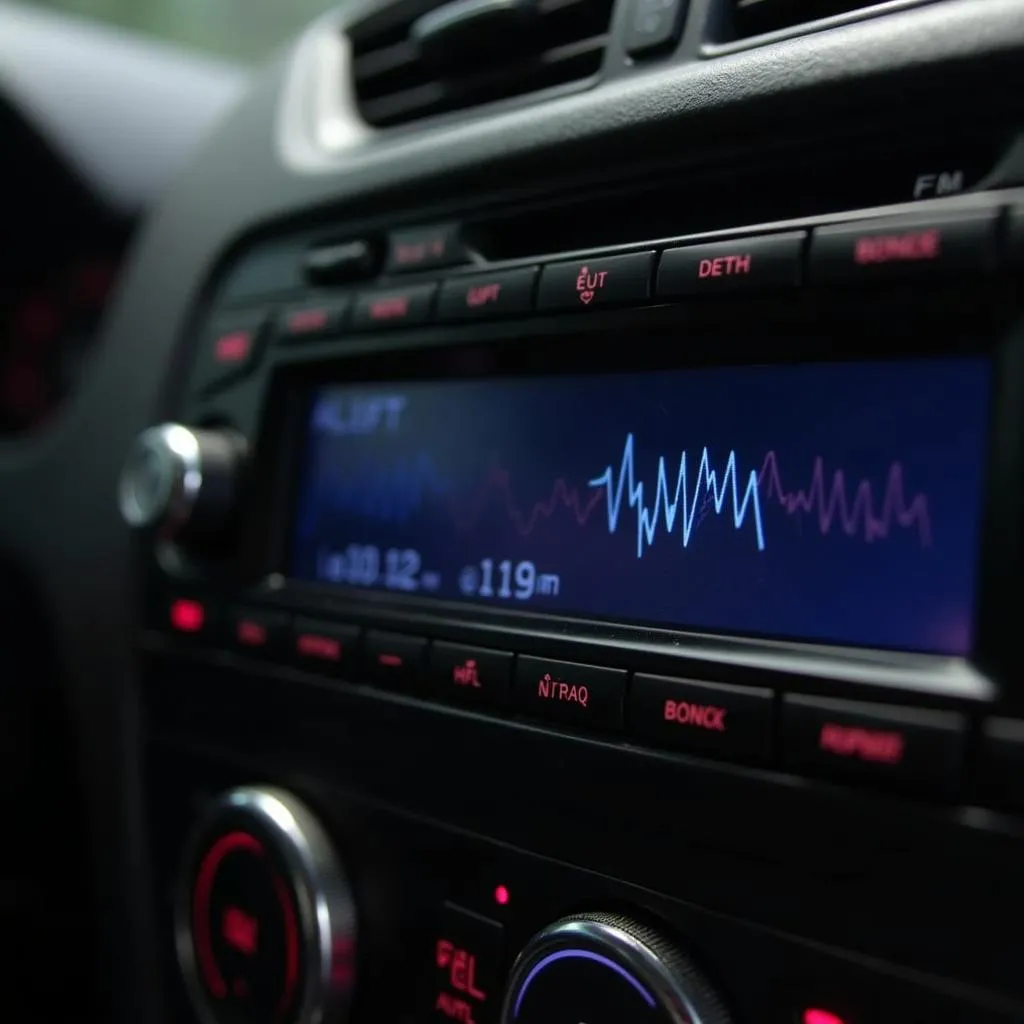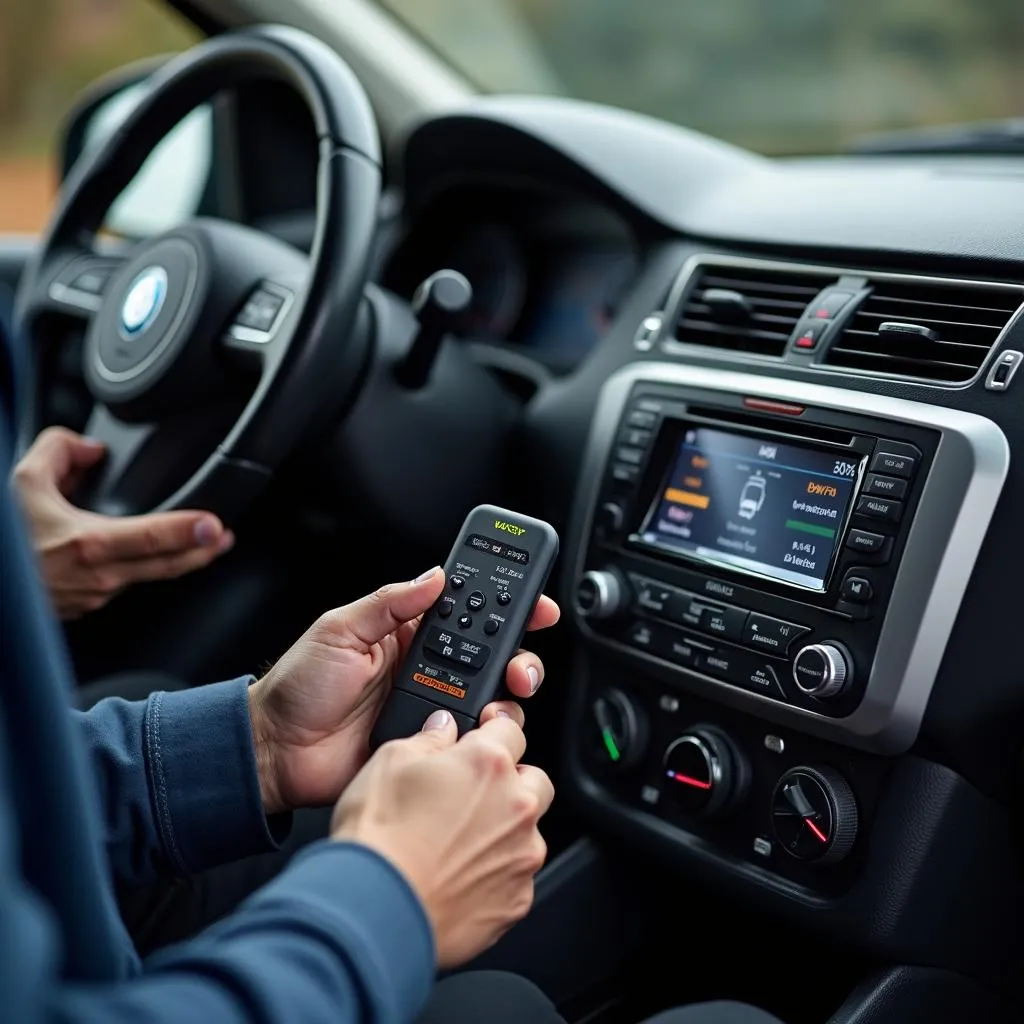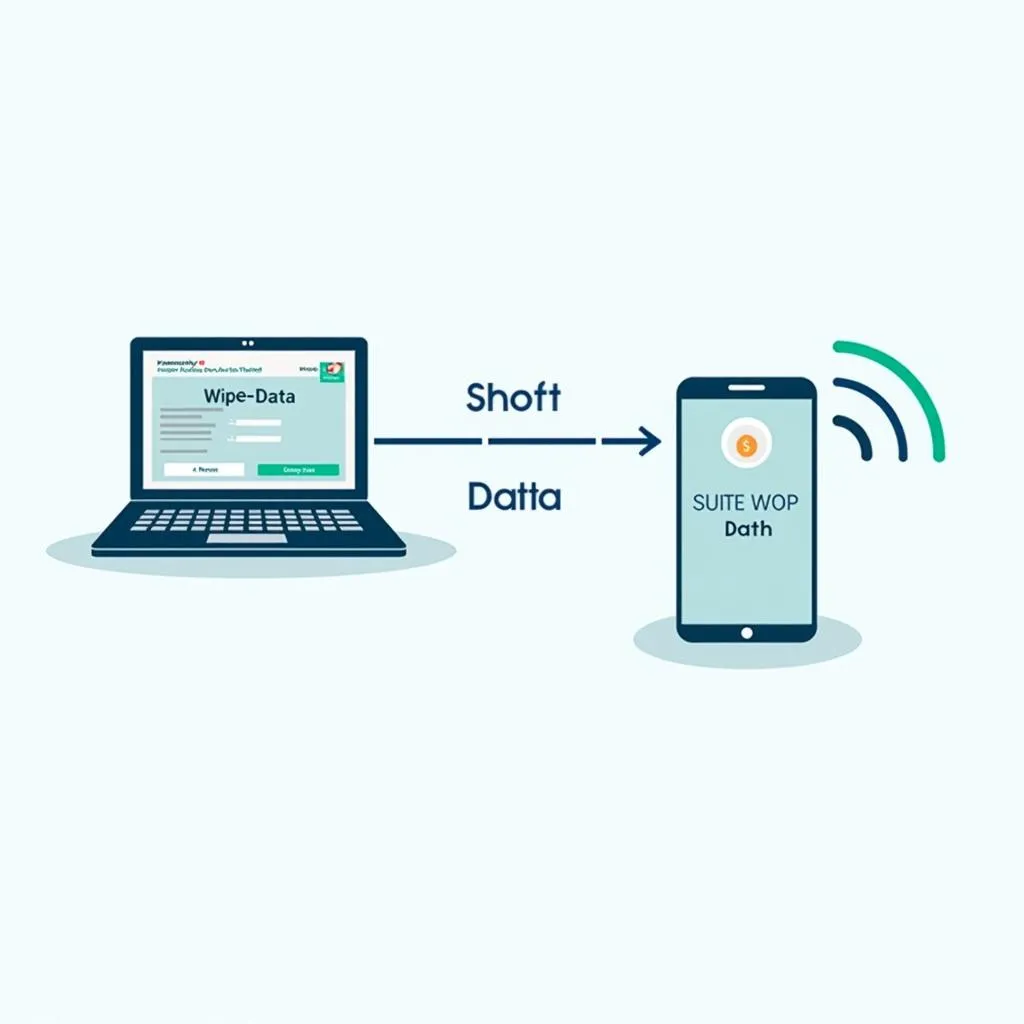In today’s digital age, we heavily rely on our smartphones for music, podcasts, and audiobooks. For many of us, our cars have become extensions of our digital lives. But what happens when your car’s audio system can’t keep up? That’s where a Bluetooth car radio FM transmitter comes in handy, bridging the gap between your phone and your car’s speakers. But like any piece of technology, these handy devices can sometimes encounter issues.
This comprehensive guide will walk you through common problems, troubleshooting tips, and even repair instructions for Bluetooth car radio FM transmitters. We’ll cover everything from identifying the root cause of the problem to getting your music pumping again.
Common Issues with Bluetooth Car Radio FM Transmitters
Let’s dive into some of the frequent hiccups you might encounter with your Bluetooth car radio FM transmitter:
1. Poor Sound Quality or Static Noise
One of the most frustrating issues is dealing with static, choppy audio, or muffled sound. This can stem from several factors:
- Signal Interference: Other electronic devices, power lines, or even the car’s own electronics can interfere with the FM signal, leading to static.
- Weak Transmitter: A low-quality transmitter might struggle to maintain a strong, clear signal, especially in areas with many radio stations.
- Incorrect Frequency: If the transmitter and car radio aren’t tuned to the same frequency, you’ll experience poor reception.
- Ground Loop Issues: A difference in electrical potential between your car’s electrical system and the transmitter can cause a buzzing or humming sound.
2. Bluetooth Connection Problems
Pairing issues and intermittent dropouts are another common headache:
- Pairing Issues: The transmitter and your phone may have compatibility issues, or the pairing process wasn’t completed correctly.
- Distance Limitations: Bluetooth has a limited range; moving too far from your car can cause the connection to drop.
- Interference: Other Bluetooth devices or wireless signals can interfere with the connection between your phone and the transmitter.
3. Transmitter Not Powering On
Sometimes, the issue is as basic as the transmitter not receiving power:
- Faulty Car Charger: A damaged or loose car charger can prevent the transmitter from powering on.
- Blown Fuse: A blown fuse in the car’s fuse box (or the transmitter itself, if it has one) can cut off power.
- Internal Transmitter Fault: In some cases, the transmitter’s internal components might be damaged, preventing it from turning on.
 Car Radio with Static Noise
Car Radio with Static Noise
Identifying the Root Cause
Before jumping into solutions, it’s crucial to pinpoint the problem’s source. Here’s a systematic approach:
- Check the Obvious: Ensure the transmitter is properly plugged in, the car radio is on, and the volume is turned up.
- Isolate the Problem: Test the transmitter with a different phone and cable to rule out device-specific issues. Try a different car if possible.
- Examine the Environment: Are you in an area with many tall buildings, power lines, or other potential sources of interference?
- Consult Your Manuals: Refer to the user manuals of both the transmitter and your car radio for troubleshooting tips specific to your models.
Troubleshooting and Repair Solutions
Now, let’s explore some solutions for the problems we’ve outlined:
1. Addressing Poor Sound Quality
- Change the FM Frequency: Experiment with different empty FM frequencies on your car radio to find one with less interference.
- Reposition the Transmitter: Try moving the transmitter to a different cigarette lighter socket or using an extension cable to find a spot with better reception.
- Reduce Bass Levels: High bass levels can sometimes cause distortion, particularly with less powerful transmitters.
- Ground Loop Isolator: If you suspect a ground loop issue, purchase a ground loop noise isolator to filter out the unwanted noise.
2. Fixing Bluetooth Connection Issues:
- Re-pair Devices: “Forget” the transmitter from your phone’s Bluetooth settings and the phone from the transmitter (if applicable). Then, try pairing them again.
- Update Firmware: Check the manufacturer’s website for any firmware updates for your transmitter, as these updates often address bugs and compatibility issues.
- Minimize Interference: Temporarily disable Bluetooth on other devices in the car.
- Reset Transmitter: Many transmitters have a reset button or a reset sequence outlined in the manual. This can often resolve connection glitches.
3. Resolving Power Issues:
- Check Car Charger: Inspect the car charger for damage. Try a different charger to see if that resolves the issue.
- Inspect Fuse: Locate the fuse related to your car’s cigarette lighter socket (refer to your car’s manual) and check if it’s blown. If so, replace it with a fuse of the same amperage.
- Contact Manufacturer: If you suspect an internal fault with the transmitter and it’s under warranty, contact the manufacturer for repair or replacement options.
 Mechanic Using a Diagnostic Tool and Bluetooth Transmitter
Mechanic Using a Diagnostic Tool and Bluetooth Transmitter
FAQs About Bluetooth Car Radio FM Transmitters:
Q: Can I use a Bluetooth transmitter with any car radio?
A: Yes, Bluetooth transmitters are generally compatible with any car radio that has an FM tuner.
Q: Why is my transmitter’s sound quality better at some frequencies than others?
A: The FM band can be crowded, and certain frequencies might experience more interference than others depending on your location.
Q: Does the quality of my car’s speakers impact the transmitter’s sound?
A: While a transmitter can improve your listening experience, it can’t magically transform poor-quality car speakers. The transmitter’s sound quality will be limited by the capabilities of your car’s audio system.
Q: What is the ideal frequency to use with a Bluetooth FM transmitter?
A: There’s no single “best” frequency. It’s always recommended to scan the FM band and choose an empty frequency with minimal static or interference.
Q: Can I leave my Bluetooth transmitter plugged in all the time?
A: It’s generally safe to leave the transmitter plugged in, but it’s good practice to unplug it when not in use to avoid draining your car’s battery, especially if your car has a cigarette lighter socket that remains powered even when the ignition is off.
Need More Help?
If you’ve tried these troubleshooting steps and are still experiencing issues, don’t hesitate to reach out to the experts at CARDIAGTECH. Our team specializes in automotive diagnostics and electronics, and we’re here to help you get your car’s audio system back on track. Contact CARDIAGTECH today for personalized assistance and to learn more about our range of automotive diagnostic solutions.


